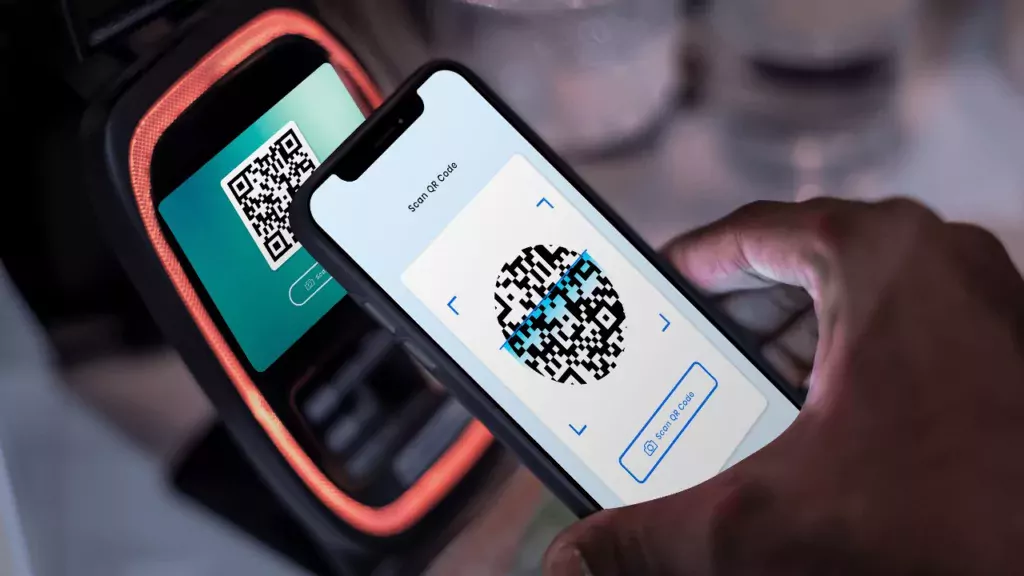Digital Authentication In Banking: Technologies And Applications
The security technology in the banking field continues to develop every day. Among the security measures that use solutions and tools offered by different technologies, digital authentication is one of the most frequently preferred. So what is digital authentication, and how do digital authentication in banking applications work?
Digital authentication is the verification in which the identity verification methods used by customers to enter banking applications are completed digitally. Biometric verification and multi-factor authentication, encryption, and token technologies are frequently used in identity verification processes.
Thanks to digital authentication in banking, the security of both customers and financial institutions is ensured. Especially with biometric verification, the entry is provided using the physical and unique features of the customers, making identity verification processes both safer and faster. In the future, there will be more practical and safer digital authentication in banking solutions with the use of artificial intelligence-supported tools.
What Is Digital Authentication In Banking?

Digital authentication in banking can be defined as technological methods in which identity verification processes are completed digitally when logging into mobile applications or online banking platforms where customers of banks or other financial institutions perform financial transactions. These types of technologies generally use two-factor authentication and biometric authentication methods.
Multi-factor authentication methods are one of the most common types of digital authentication in banking, where customers approve the entry using an SMS code via another device or mobile phone during the login process to banking applications and thus provide identity verification.
Another common example of digital authentication in banking is biometric authentication. Biometric authentication methods use the physical characteristics of customers to make the identity verification process both faster and more efficient. Biometric authentication methods are the most widely used examples of digital authentication in banking, where technologies such as fingerprint, facial recognition, voice scanning, and unique physical characteristics of customers are used as verification methods.
How Does Digital Authentication Improve Security In Banking?
Security is one of the most important issues in the banking sector. If a financial institution or bank has deficiencies in security, customers will hesitate to receive service from this institution and there will be financial shrinkage for the bank. For this reason, many banks or financial institutions allocate a significant amount of their resources to the field of security. Digital authentication in banking applications is the most important technology that provides this.
Unlike traditional identity verification methods, the level of security in the banking sector is increased thanks to authentication in banking technologies. In this way, the possibility of fraud cases without the approval of financial institutions or banks’ customers is minimized, while possible identity theft cases are also prevented.
It has been observed that identity theft and fraud cases are reduced to zero in banks where digital authentication in banking methods such as biometric verification or multi-factor verification are used. Because thanks to these types of verification methods, it is not possible for someone else to make a financial transaction without your approval.
What Are The Key Technologies For Digital Authentication In Banking?
Many different technologies and tools are used in the field of digital authentication in banking. The most common technologies among these can be listed as follows:
- Biometric authentication
- Multi-factor authentication
- Encryption
- Token technology
- Face recognition
- Iris scanning
- Fingerprint
- Voice scanning and identification technology
- Artificial intelligence solutions
- Blockchain tools
Biometric authentication technology is a relatively cheaper but widespread technology found even in today’s affordable mobile phones. Today, if a bank customer receives financial services from a reputable and reliable bank, they can benefit from biometric verification and physical features such as facial recognition and fingerprint scanning when entering the banking application. In this way, it makes it impossible for someone else to enter or make a financial transaction.
Multi-factor authentication is a common example of authentication in banking where verification is provided by sending a code to another device or a defined mobile phone number when customers enter mobile banking applications. Digital authentication in banking solutions will develop and become more personalized shortly with the widespread use of artificial intelligence technology and tools.
How Is Biometric Authentication Used In Banking?
Biometric verification technology is a relatively cheap but widespread technology found even in today’s affordable mobile phones. Today, if a bank customer is receiving financial services from a reputable and reliable bank, they can benefit from biometric verification and physical features such as facial recognition and fingerprint scanning when entering the banking application.
In this way, it makes it impossible for someone else to enter or perform a financial transaction. Fingerprint sensors on mobile phones, front cameras used for facial scanning or iris scanning, and microphones used for voice scanning facilitate the use of biometric verification methods.
Thanks to this technology, it becomes impossible for another user to perform a transaction on your behalf, even if they know your login information or passwords to banking applications. However, your physical and unique features must be used. Biometric verification methods, which are the most common authentication methods, continue to use different data every day.
What Are The Benefits Of Digital Authentication In Banking?

Digital authentication in banking offers many benefits to both financial institutions or banks and customers. Thanks to these benefits, customers have a safer banking experience, while financial institutions that manage banking operations avoid risks such as possible fraud cases.
The most critical benefit of digital authentication in banking is that it increases security and offers practicality. With traditional banking methods, logging into bank applications or making financial transactions would take much longer and require effort.
However, thanks to digital identity verification methods, financial transactions are completed in seconds, and entries are made faster. While the transaction speed increases, customers’ banking experiences are improved.
How Does Multi-Factor Authentication Work In Banking?
The Multi-Factor Authentication system has a working principle that allows you to establish secure access management at every stage, as a great example of digital authentication in banking. The system, which transmits the privileged access permission requested from target sources such as virtual servers, VPN gateways, databases, and network devices to the verification servers, applies secondary and more verification factors in the next stage.
MFA, which successfully controls access with email, SMS, desktop applications, smartphones, and location-based verification, also includes a system administrator and a network expert. While the system administrator controls additional verification factors, the network expert plays a key role in the verification process of the privileged access request with the help of direct access authorization to target resources.
The Multi-Factor Authentication system, where the network expert can observe the entire flow, works as follows:
In the first step, the user connects to one of the target resources and enters their username and password. These target sources can be virtual servers, VPN gateways, databases, and network devices. In the second step, the target host to which the user connects checks the information of the user requesting privileged access with the defined authentication server. The authentication server requests a second authentication through MFA at this stage.
In the third step, the MFA system creates a secure code for one-time use only. It then sends the generated secure code to the user via secondary authentication tools (email, SMS, mobile) or the user generates the same secure code offline with the help of their smartphone. In the fourth step, the user enters the secure code. The secure code is usually generated to reset in 30 seconds. In the fifth step, the target host sends the secure code to the MFA administrator. In the last step, the system checks whether the entered secure code is correct. If it is correct, access is granted.
What Are The Challenges Of Implementing Digital Authentication In Banking?
Digital authentication methods used in banking facilitate customers’ banking transactions but also include operational risks. These risks include risks such as lack of technical equipment, faulty transactions, security vulnerabilities, insufficient controls, customer rejection, and human error. The complexity of digital authentication in banking processes prevents customers from understanding the process and makes the process vulnerable to fraud. This risk can also lead to customer loss. It is also important that the mobile application used in this process is user-friendly.
Customer satisfaction must be ensured under all circumstances. However, remote identification processes can be time-consuming and boring for bank customers, as they can include complex processes. While unnecessary checkpoints make the process secure, they can also be the main reason for customer loss because they create an environment that is not user-friendly. Identity information checked with computer programs is not 100% accurate. There is a 0.1% chance of making an incorrect inference.
For example, in Amazon’s facial recognition system, computers concluded that 28 of the 25,000 criminal photos uploaded to the platform were current members of Congress. With the spread of remote identification methods, security risks are also increasing. Digital platforms used in these methods require the sharing of personal and sensitive data. Existing authentication methods are not user-centric, thus endangering the security of users.
How Do Banks Use Digital Authentication To Prevent Fraud?
Biometric data belonging to individuals (fingerprint, digital photo, palm print, etc.) or data derived from this data with an algorithm are recorded in central databases. At the point of identity verification, the individual introduces his/her biometric data to a device (such as a biometric sensor and/or camera) and this data is transmitted to the center and matched there. Therefore, thanks to digital authentication in banking, someone else can’t perform transactions on your behalf and thus fraud is prevented.
The biggest danger in such systems is the risk that data may fall into the hands of other malicious individuals while being transmitted from endpoints to the center or stored in the center. A malicious employee or hackers working in the institution can attack these central databases or communication lines, seize, copy, and use biometric data or derived data belonging to individuals for other purposes.
How Does Digital Authentication Enhance Customer Experience In Banking?

Digital authentication in banking is one of the effective methods used to increase user security. This method uses two separate factors to verify the user’s identity: the first is information known to the user or elements such as an access license; the second is an object that the user physically possesses, usually a mobile device or a dynamic code obtained through a specific application.
This method, used with mobile devices, increases usability by using a device that users usually carry with them at all times. Thus, the need to carry additional hardware is eliminated and users can easily use this method in their daily lives. In addition, professional two-factor authentication solutions can automatically change the user’s password each time they use it, preventing old passwords from being reused.
This method provides an additional layer to increase security without compromising users’ comfort and usability. It can also include additional security measures such as blocking users to protect accounts in case of incorrect password entry. Two-factor authentication is a method developed and implemented by modern security requirements, but it should be carefully configured and managed.
What Are The Future Trends In Digital Authentication For The Banking Sector?
I can mention AI and blockchain for future trends in digital authentication in banking. The combination of blockchain and artificial intelligence affects many areas such as the Internet of things, identity, financial markets, smart cities, civil governance, supply chain, small communities, personalized medicine, and so on, and thus benefits many people.
Artificial intelligence improves traditional facial recognition systems by allowing faster and more accurate identification systems. Facial recognition technologies are increasingly being used by private and public actors to provide effective surveillance. The figure below shows a clearer illustration of a facial recognition system developed with artificial intelligence technologies to identify people’s identities created online.
The immutable and distributed nature of blockchain databases can also be used for identity verification and reputation management. A common problem of digital identity methods is that they rely on a trusted intermediary to verify the authenticity of the identity. In this case, service providers have all the power to decide to grant permission for verified identity to the intermediaries, and service fees are offered. It can be said that blockchain technologies facilitate identity verification in this sense and speed up the management of the process.
Digital identity, defined as a concept enabled by blockchain technology, is likely to change people’s lives. Thanks to the benefits of digital identities, which are seen as a Blockchain 3.0 innovation, more than 2 million people in the world who do not have a bank account can store their identities on the blockchain, obtain permission from banks by fulfilling regulatory requirements such as Know Your Customer (KYC) and have access to bank accounts and other financial services.
See you in the next post,
Anil UZUN
